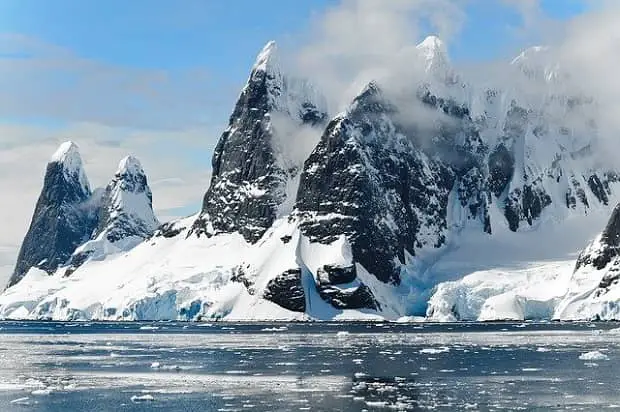Is the world getting warmer due to the global warming phenomenon? Then why is it so cold in winter in the temperate countries? This article discusses this issue in the light of the evidences available.
As climate change raises our planet’s temperatures, warming has affected winters more quickly than summers. However, when temperatures drop below zero, many people, including US President Donald Trump , asks: “If the Earth is getting warmer, why is it so cold in winter?” Is there really global warming?
The answer lies in the difference between the local weather state and the climate in general.
Climate Defined and An Analogy
Climate refers to how the atmosphere behaves over a long period, while the weather describes what happens in a much shorter time frame. In a certain way, climate can be considered as the sum of long periods of the weather.
Or, if we use an analogy: the weather represents the amount of money you have in your pocket today, while the weather is your net worth. A billionaire who forgot his wallet one day is not poor, just as a person in poverty does not become rich if he suddenly makes an unexpected profit of a few hundred dollars. The important thing is what happens in the long term.
The Earth is Getting Warmer
Even if one day you are colder than usual, the whole planet is more often hotter than the historical average.
For example, in December 2017 there was a period in which the weather was unusually cold in several regions of the United States; they had temperatures between 8 and 16 degrees Celsius colder than normal, but the world in general had conditions 0.5 degrees warmer than the average during 1979 to 2000.
Climatologists expect the world to warm, on average, by 1 to 3 degrees Celsius more by the end of the century – depending on how fast greenhouse gas emissions rise – but this is not forecast to mean the end of winter. There will still be historically minimum levels of temperatures, only that they will be increasingly spaced.
What the Evidences Say
According to a study published in 2009 , the United States had almost the same amount of historical maximums as temperature lows during the 1950s, but by the 2000s it had twice the maximums than historica lows. There were still waves of cold, but they were becoming much less frequent.

Cold Surges Due to Polar Vortex
Some of the recent cold surges have occurred because of a climatic phenomenon called the polar vortex, referring to circular wind bands near the poles. There is increasing evidence suggesting that the polar vortex is appearing more frequently outside the Arctic region, due to changes in the current as a result of the warming of the atmosphere. These changes allow the icy air to escape from the Arctic and swoop down to the south.
Some politicians in the world have already tried to use cold waves to argue that global warming is not such. US President Donald Trump is accustomed to showing his skepticism about climate change on Twitter, and has published comments on “climate change” or “global warming” more than a hundred times since 2011. Before becoming president, he said the change in climate was a hoax and claimed that the idea had been perpetuated by the Chinese.
In 2018, he retracted his comment, saying: “I do not think it’s a hoax. Yes, I think there’s probably a difference, but I do not know if it’s caused by humanity.”
Hundreds of scientific organizations indicate that human activities are mainly responsible for global warming.



THIS WAS A GOOD AND AFFORDABLE EFFICIENT REPORT